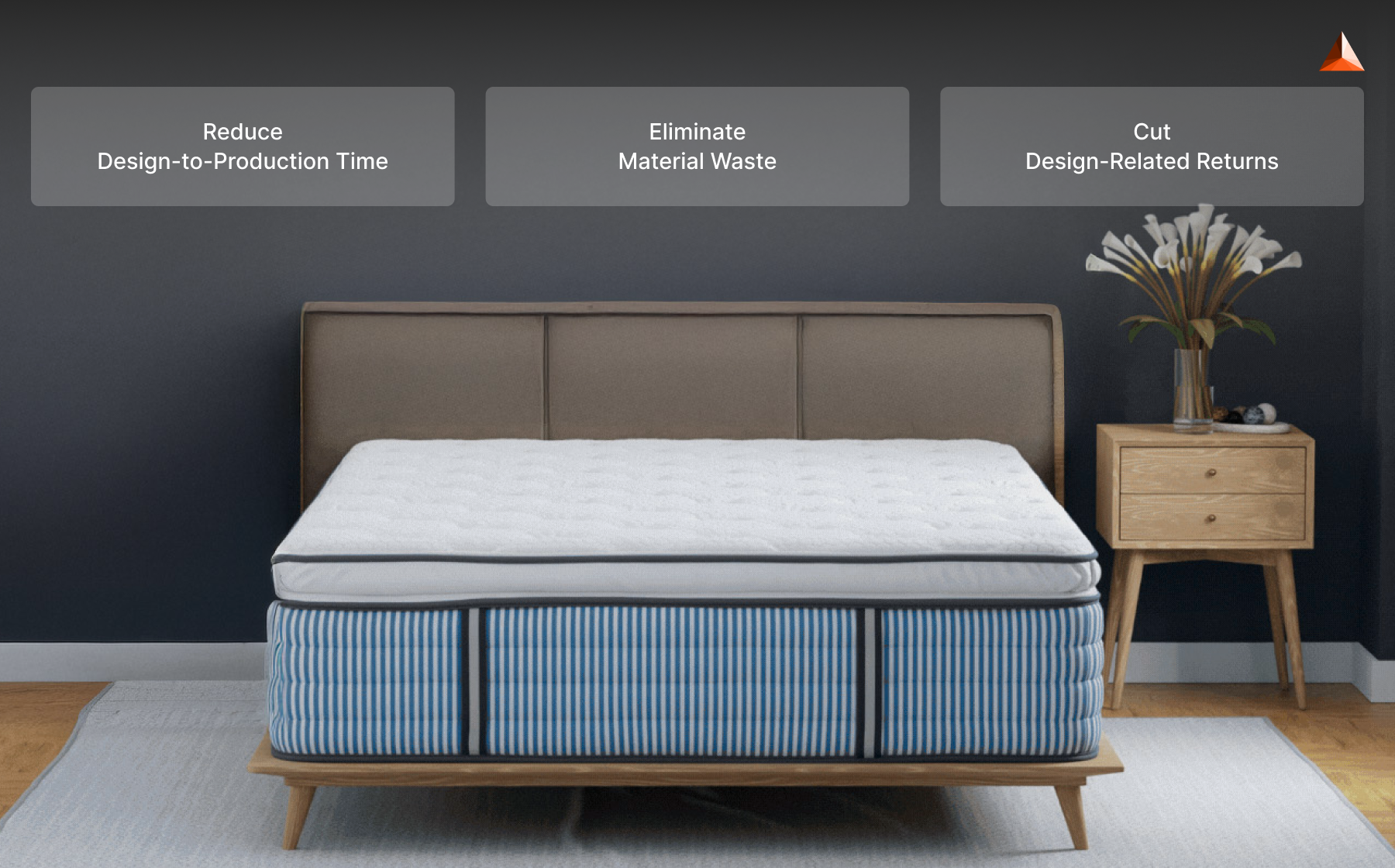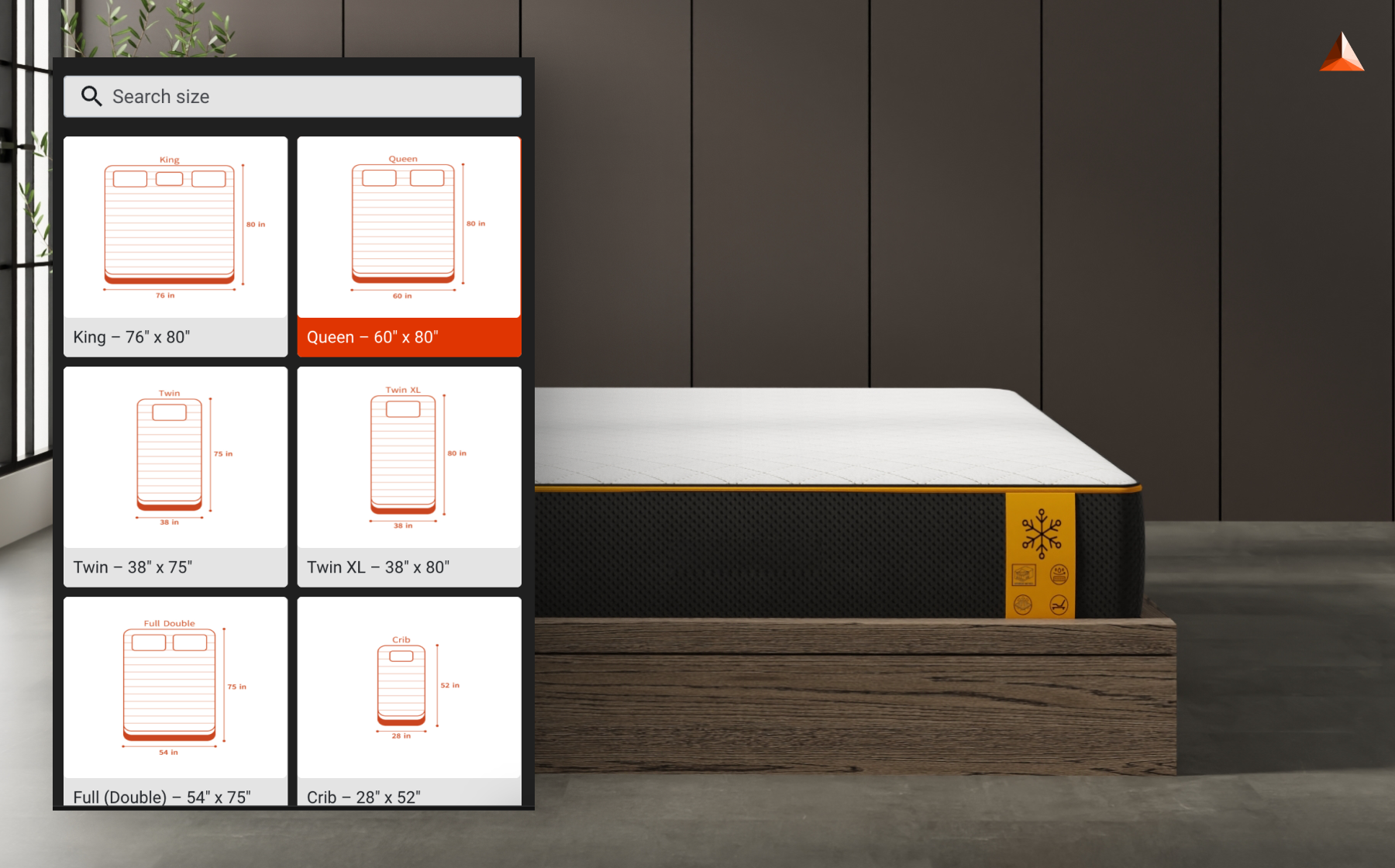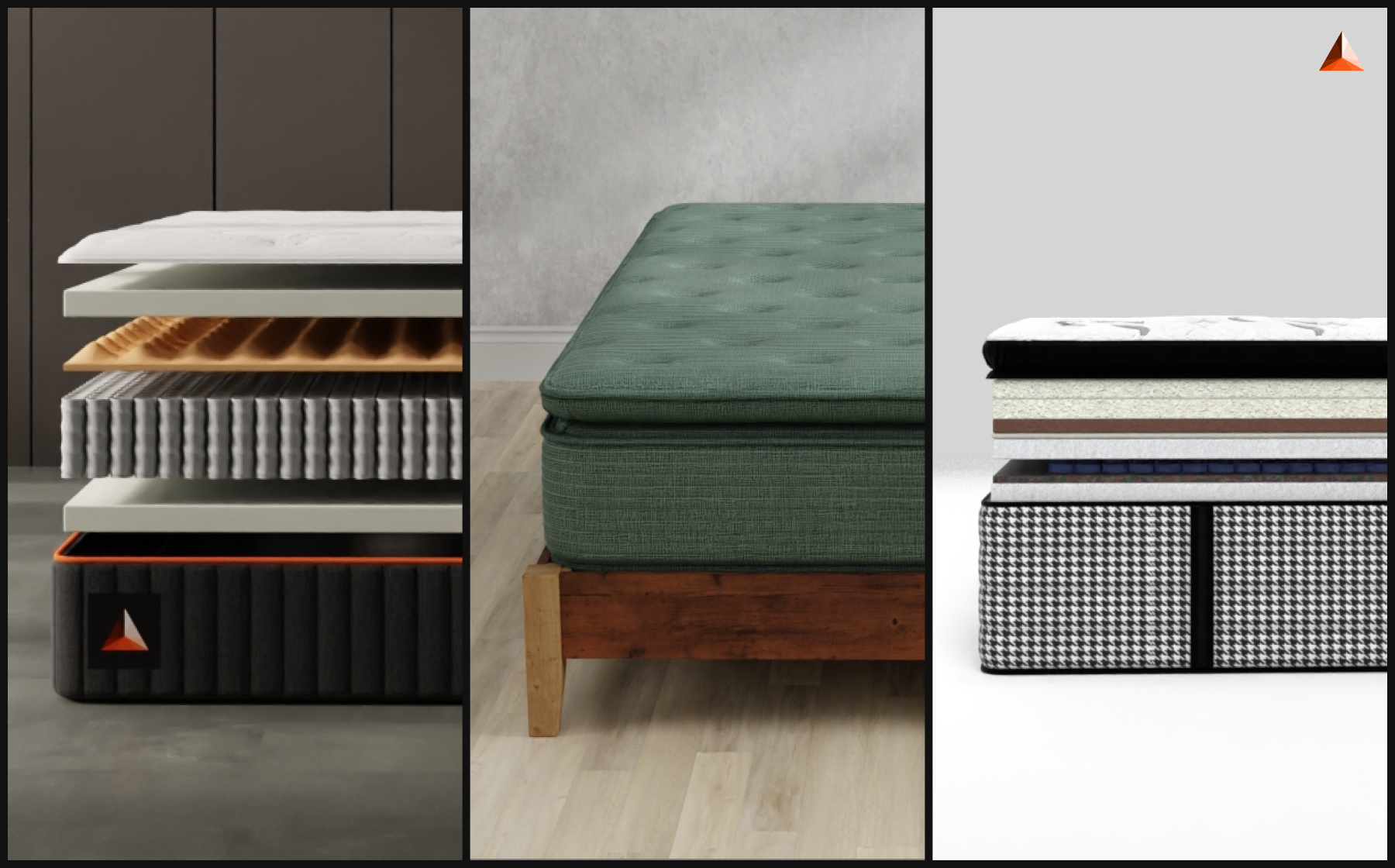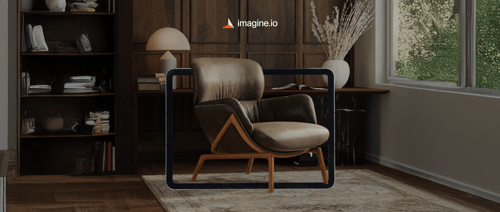What if your competitor could deliver a custom mattress 3x faster than you? In today's market, speed and precision aren't just advantages — they're what set leaders apart. As client expectations evolve, personalization has become the new standard. Whether it's a yacht cabin, a boutique hotel suite, or a healthcare bed with unique dimensions, customers expect products that fit perfectly — in both comfort and form.
For manufacturers and retailers, mastering how to make a custom size mattress efficiently isn't optional anymore; it's a growth opportunity. The ability to create made-to-measure solutions doesn't just satisfy demand — it defines your brand's adaptability in a fast-changing market.
In this guide, we'll walk through the complete process of making a custom mattress, how 3D visualization streamlines every stage, and why modern manufacturers are embracing imagine.io's 3D Mattress Builder to deliver precision, speed, and creativity — all in one seamless workflow.
Get the latest updates straight to your inbox.
By clicking sign up you'll receive occasional emails from imagine.io. You always have the choice to unsubscribe within every email you receive.
The Business Case: Why Digital Mattress Manufacturing Matters

Digital mattress manufacturing goes beyond improving efficiency — it transforms how manufacturers design, produce, and sell. By adopting digital workflows, businesses can accelerate product development, offer greater customization options, and enhance overall customer satisfaction. In a market where precision and personalization define success, going digital is no longer optional — it’s a strategic advantage.
-
Accelerate Design-to-Production Timelines
With 3D digital prototyping, manufacturers can move from concept to production-ready specifications in a fraction of the usual time. Instead of spending weeks on manual sampling and adjustments, teams can iterate virtually, finalize designs faster, and bring new models to market with remarkable speed. This agility allows businesses to take on more projects without increasing production capacity or labor costs.
-
Minimize Material Waste Through Precision Manufacturing
Digital production tools like CNC and waterjet cutting enable manufacturers to achieve exact dimensions and consistent quality every time. This precision significantly reduces material waste compared to manual cutting methods. By optimizing foam layouts and minimizing errors, manufacturers can not only lower production costs but also move toward more sustainable and environmentally responsible practices.
-
Improve Accuracy and Reduce Design-Related Returns
One of the most impactful benefits of digital mattress manufacturing is the ability to visualize products before they’re made. Using 3D visualization, clients can preview their custom designs, materials, and dimensions in real time — ensuring every detail matches expectations. This reduces miscommunication, enhances confidence in orders, and drastically cuts down on post-production changes or returns.
Start with the Purpose: Why Custom Size Mattresses Matter
Before cutting foam or choosing fabrics, it’s crucial to understand the “why” behind custom mattresses — especially from a business perspective.
-
Space Optimization
Custom mattresses are essential for spaces with unconventional dimensions — think RVs, yachts, or compact hotel rooms. With tailored builds, you can ensure a perfect fit without compromising on comfort.
-
Customer Experience
Customization enhances satisfaction. Allowing clients to select firmness, layers, and materials shows that your brand values their preferences — and that drives long-term loyalty.
-
Market Differentiation
Offering the ability to build a mattress to exact specifications isn’t just a value-add — it’s a market advantage. It lets you serve premium customers, charge more confidently, and expand into niche categories like medical, automotive, or hospitality solutions.
In short, a custom mattress foam product isn’t just a product — it’s a statement of craftsmanship and adaptability.
Gather Exact Measurements

Accuracy is the foundation of every successful custom build. Even a few millimeters off can lead to a poor fit, wasted material, or a dissatisfied customer. Encourage your team or clients to measure:
- Length, width, and height (thickness) precisely
- Corner style — rounded, beveled, or angled
- Special contours or shapes for cut-to-fit foam mattresses in boats, trucks, or adjustable beds
Modern businesses are moving away from manual measurement sheets and shifting toward digital modeling. By importing exact frame dimensions into 3D visualization tools, you can virtually test how the mattress fits before a single cut is made — eliminating guesswork and material waste.
This accuracy is key when determining how to customize mattress size or when building a custom-shaped mattress for a unique project.
Choose the Right Foam and Materials
Once you’ve nailed the dimensions, the next question is: what’s inside the mattress? Different applications call for different materials, and understanding the options is key:
-
Custom Memory Foam Mattress: Ideal for premium or healthcare segments. It adapts to the body and provides pressure relief — ideal for clients who emphasize comfort and ergonomics.
-
High-Density Custom Foam Mattress: Suited for commercial environments like hotels or student housing, where durability and structure matter most.
-
Hybrid Mattresses: Combine layers of latex, gel, and memory foam to balance support and breathability.
The beauty of using custom mattress foam is control — you decide density, firmness, and performance. Businesses that manage these specifications digitally can respond faster to client requests while maintaining consistency across production lines.
If you’ve ever wondered how to make a custom foam mattress, this is the stage where your material choices set the tone for comfort, longevity, and brand differentiation.
Digitally Prototype Before Cutting

Traditional prototyping is a bottleneck. You know the drill — multiple physical samples, endless adjustments, expensive materials, and weeks lost to back-and-forth approvals. With imagine.io’s 3D Mattress Builder, those inefficiencies disappear. It allows you to:
-
Visualize layers and components (foam, springs, fabric) in real time.
-
Toggle between external, internal, and exploded views to inspect design accuracy.
-
Fine-tune firmness, density, and materials dynamically.
-
Generate and share high-quality renders instantly with your clients or team.
This digital-first workflow helps you prototype virtually, get immediate feedback, and move to production only when the design is finalized — cutting development time from weeks to under 20 minutes in some cases.
No wasted materials. No expensive revisions. Just smarter, faster creation — whether you’re making your own mattress for retail or for a specialized B2B order.
Material Cutting and Assembly
Once the digital prototype is approved, the physical build begins — but the precision remains.
-
Cutting Foam: Use CNC or waterjet cutters for custom-cut foam mattress components. These methods ensure perfect alignment and clean edges based on your digital model.
-
Layering and Gluing: Stack materials as per your 3D prototype. Automated glue systems ensure consistency across builds.
-
Encasing: Choose breathable fabrics like bamboo, cooling knits, or organic cotton, and customize details like piping, handles, or labels to elevate your product’s look.
-
Quality Testing: Conduct compression and durability tests to ensure each build meets the same performance standard — essential for contract and hospitality clients.
By mirroring your digital design during assembly, your production process stays accurate, efficient, and repeatable — making every mattress project a consistent success.
Finishing Touches & Quality Control
This is where craftsmanship meets technology.
Check every mattress for dimensional accuracy using laser measurements. Ensure edge tape alignment, stitching consistency, and correct branding placement. Compare physical results against your 3D digital template to confirm precision.
With imagine.io’s asset library, you can save verified 3D templates for every mattress model. When a client reorders or requests a size variation, your team can reproduce it instantly — maintaining quality while reducing turnaround time.
For manufacturers looking to make a mattress that’s perfectly consistent across markets, digital templates are the backbone of repeatable excellence.
Streamline Customization with 3D Visualization Tools
Let’s be real — making a custom mattress isn’t just about manufacturing; it’s about communication. Designers, engineers, and sales teams all need to be on the same page.
That’s where 3D visualization platforms like imagine.io transform the process. Instead of sketching ideas or building costly samples, teams can:
-
Adjust sizes and dimensions on-screen with exact precision.
-
Customize every detail — labels, stitching, piping, accessories.
-
Experiment with materials from pre-digitized libraries or upload their own.
-
Share visuals instantly with clients, and even export ready-to-use assets for production or marketing.
This isn’t just innovation — it’s operational efficiency. By making your own mattress digitally, you align creative, production, and sales workflows in one seamless environment — and gain a true competitive edge.
Conclusion
Making a custom size mattress used to mean weeks of trial, error, and expense. Today, with 3D visualization and digital prototyping, it’s a streamlined, data-driven process that lets businesses design faster, manufacture smarter, and deliver precisely what customers want.
Whether you’re manufacturing for hospitality, healthcare, or retail, embracing tools like imagine.io’s Mattress Builder gives your business a decisive edge — in speed, precision, and profitability.
Ready to experience it yourself? Talk to our experts and see how easily you can create, visualize, and scale your custom shape mattress designs — from concept to market.


.gif?width=1296&height=1296&name=Untitled%20design%20(8).gif)



.png?width=500&name=How%20to%20Add%20a%203D%20Product%20Configurator%20to%20Your%20WordPress%20Website%20(Complete%20B2B%20Guide).png)
















%20(1).png?width=500&name=Why%20Exploded%20Mattress%20Views%20Matter%20(And%20How%20to%20Generate%20Them)%20(1).png)
.png?width=500&name=Best%20Shopify%20Product%20Configurator_%20How%20to%20Choose%20the%20Right%20One%20(2).png)
.png?width=500&name=Why%20Exploded%20Mattress%20Views%20Matter%20(And%20How%20to%20Generate%20Them).png)



.png?width=500&name=Best%20Shopify%20Product%20Configurator_%20How%20to%20Choose%20the%20Right%20One%20(1).png)







.png?width=500&name=How%203D%20Rendering%20Can%20Make%20or%20Break%20Your%20Industrial%20Design%20Pitch%20(1).png)








%20with%20Digital%20Twins%20and%203D%20Visualization.png?width=500&name=Optimizing%20Your%20Digital%20Asset%20Management%20(DAM)%20with%20Digital%20Twins%20and%203D%20Visualization.png)




.png?width=500&name=Styling%20Home%20Decor%20for%202025_%20From%20Global%20Influences%20to%20Playful%20Personalization%20(1).png)

